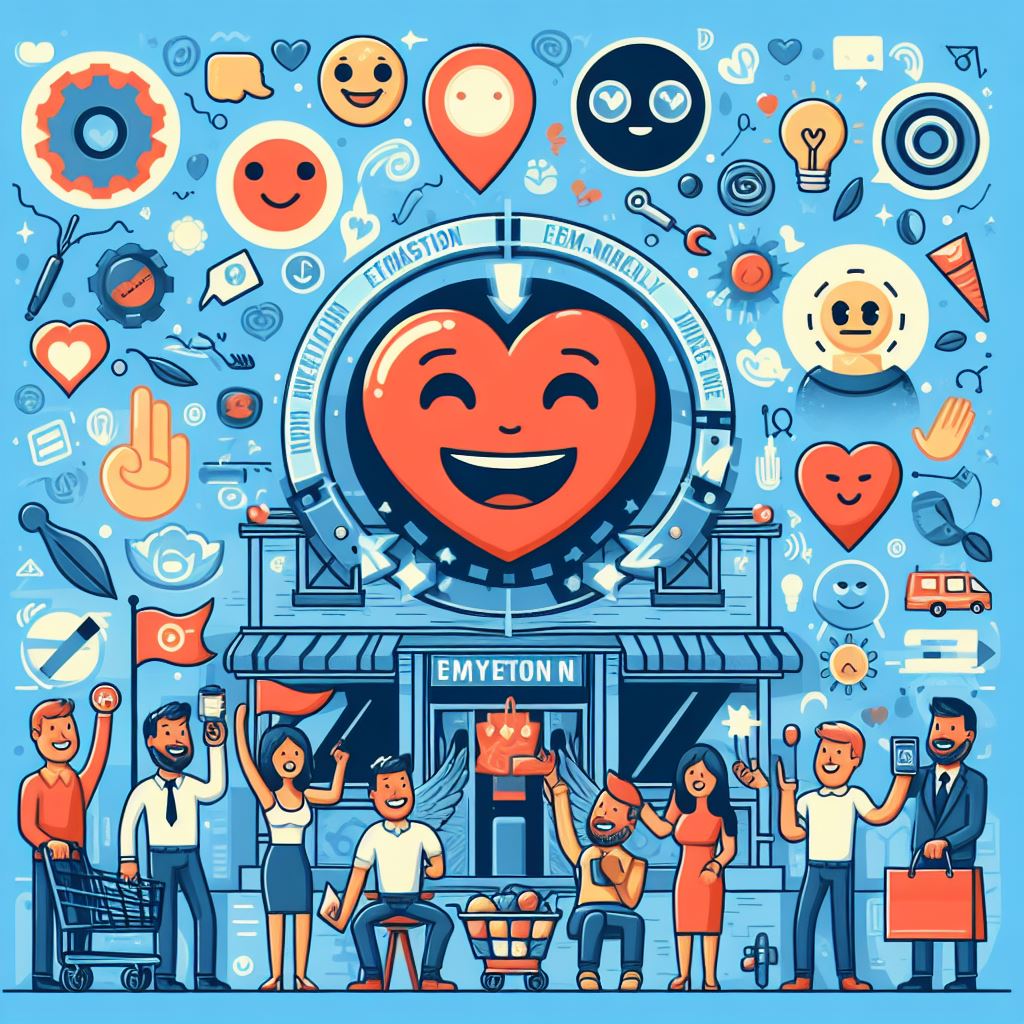
How Emotional Branding Impacts Customer Loyalty and Retention
In today’s competitive business landscape, emotional branding has emerged as a powerful strategy for building lasting customer relationships. Brands that successfully connect with their audience on an emotional level can drive loyalty, repeat business, and positive word-of-mouth. In this blog post, we’ll explore the impact of emotional branding on customer loyalty and retention, and provide actionable insights for marketers.
Understanding Emotional Branding
Emotional branding goes beyond functional benefits and taps into the hearts and minds of consumers. It involves creating a brand identity that resonates with people’s emotions, values, and aspirations. Here are some key points to consider:
- Emotional Attachment: When customers feel emotionally attached to a brand, they are more likely to remain loyal. This attachment can stem from shared values, memorable experiences, or a sense of belonging.
- Brand Love: Brand love is a deeper level of emotional connection. It’s when customers not only like a brand but genuinely love it. These passionate fans become advocates who enthusiastically recommend the brand to others.
- Perceived Authenticity: Authenticity is crucial for emotional branding. Customers want to engage with brands that are genuine, transparent, and aligned with their beliefs.

The Impact on Customer Loyalty
So, how does emotional branding impact customer loyalty and retention? Let’s dive into the research:
- Increased Spending: Emotionally engaged customers tend to spend more. According to studies, 70% of emotionally loyal consumers spend up to two times or more on brands they love, compared to less engaged customers1. Brands that evoke positive emotions can increase basket size and purchase frequency.
- Top-of-Mind Awareness: Emotionally connected customers always think of their favorite brands when they need something. This top-of-mind awareness translates into consistent purchases. In contrast, less emotionally engaged customers are more likely to consider alternatives.
- Word-of-Mouth Advocacy: Emotionally loyal customers become brand advocates. They willingly promote their favorite brands among family and friends. This organic word-of-mouth marketing is invaluable for brand growth.
Strategies for Building Emotional Branding
Now that we understand the impact, let’s explore strategies to enhance emotional branding:
- Storytelling: Share authentic stories that resonate with your brand’s values. Use narratives to create an emotional bond with your audience.
- Consistent Brand Voice: Maintain a consistent tone across all touchpoints. Whether it’s your website, social media, or customer service, ensure that your brand voice reflects its emotional essence.
- Customer Experience: Every interaction matters. Provide exceptional customer experiences that evoke positive emotions. Personalization, surprise gifts, and memorable moments contribute to emotional attachment.
- Purpose-Driven Marketing: Align your brand with a purpose beyond profits. Consumers appreciate brands that stand for something meaningful, whether it’s environmental sustainability, social justice, or community support.
Examples of Emotional Branding

Emotional branding is a powerful strategy that connects with consumers on a deeper level, creating lasting impressions and loyalty. Here are some additional examples of effective emotional branding:
- Sandy Hook Promise’s Public Service Announcement ‘Evan’:
- The organization Sandy Hook Promise created a PSA called “Evan,” which takes viewers on a journey of young love and hope through the terror of violence. The emotional switch in this video is done extraordinarily well, emphasizing attention to detail and storytelling.
- Bentley’s ‘Inspirator’ Emotion Recognition App:
- Bentley, the luxury car manufacturer, developed an emotion recognition app that used facial expressions to uncover what car buyers found inspirational. By harnessing innovative technology, Bentley personalized the car-buying experience, creating an emotional connection with individual users.
- Colin Versus Cuthbert: The Caterpillar Cake War:
- In the United Kingdom, a social media war erupted between two supermarket chains over the naming of a cake—Colin/Cuthbert the Caterpillar. Aldi, one of the supermarkets, leveraged social media with wit and humility to turn a potential PR disaster into a successful emotional marketing campaign. Their approach capitalized on the zeitgeist of the time and showcased the power of emotional branding.
- Uber’s Anti-Racism Billboard:
- Uber launched a billboard stating, “If you tolerate racism, delete Uber. Black people have the right to move without fear.” This powerful message resonated with audiences, highlighting Uber’s stance against racism and creating an emotional connection with those who value social justice.
- Emotional Storytelling at Restaurants:
- Restaurants often use emotional branding to create a memorable dining experience. For example:
- Story: “At [Restaurant Name], we bring the warmth of grandma’s kitchen to the bustling city. Every dish is a memory, every aroma a reminiscent embrace.”
- Implementation:
- Décor: Vintage, homey décor that reminds patrons of a family home.
- Menu: Include dishes with stories, evoking emotions and nostalgia.
- Restaurants often use emotional branding to create a memorable dining experience. For example:
Remember, emotional branding isn’t just about logos and slogans; it’s about forging deep connections that resonate with your audience’s hopes, desires, and values. By prioritizing emotional engagement, brands can create loyal customers who stay committed even when faced with imperfections. 🌟
How Can Small Businesses Make Their Customers Feel All the Feels?
Emotional branding is a powerful tool for small businesses to make a big impact. It’s all about connecting with your audience on a deeper level and building strong relationships that last. Here are some easy ways to bring some feels into your biz:
Get to know your people:
Before you can make anyone feel anything, you gotta know who you’re talking to! Take some time to learn about your target audience. What are their likes, dislikes, and what really gets them going? Understanding your customers will help you create messages that really resonate.
Tell some good stories:
People love a good tale! Use storytelling to create an emotional connection with your customers. Share stories about your brand’s journey, the people behind it, or even some customer success stories. Just be sure they’re real and relatable.
Make them feel special:
Don’t just treat your customers like any old number. Address them by name, show some appreciation, and go above and beyond with your customer service. When they feel seen and valued, they’ll form a deeper bond with your brand.
Give your brand some personality:
Your brand is more than just a logo and a slogan. Think about what kind of personality it has and make sure that comes across in everything you do. Is your brand funny? Serious? Adventurous? Whatever it is, be consistent and let your customers feel that vibe.
Don’t forget after-sales service:
Just because someone’s made a purchase, doesn’t mean the emotional connection is over! Excellent after-sales service can turn a one-time buyer into a lifelong fan. Be empathetic, resolve issues quickly, and always exceed expectations.
Handle criticism like a pro:
Nobody’s perfect, and sometimes you’re gonna get some negative feedback. When that happens, don’t panic! Address the issue with empathy, apologize if necessary, and take steps to make it right. How you handle criticism can have a big impact on how people perceive your brand.
Remember, emotional branding isn’t just about logos and slogans. It’s about building real connections with real people. By prioritizing emotional engagement, small businesses can create a loyal customer base that sticks around through thick and thin. So go ahead, get emotional, and watch your business thrive! 💕
Conclusion: Emotional Branding
Emotional branding isn’t just about logos and slogans; it’s about forging deep connections. By prioritizing emotional engagement, brands can create loyal customers who stay committed even when faced with imperfections. Remember, it’s not just about what you sell—it’s about how you make people feel.
So, marketers, let’s embrace emotional branding and build lasting relationships with our audience. 🌟
How to Create a Brand That People Love





